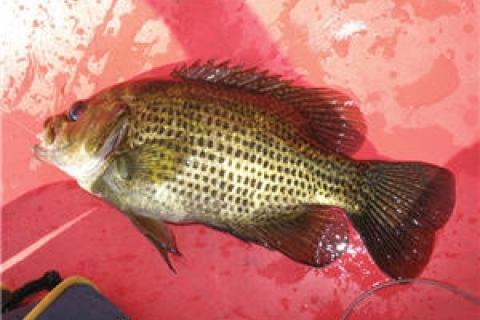
Every now and then I get the urge to catch a mess of panfish for a fish fry. Where I live that generally means rock bass, which are in abundance. In fact, they’re common enough to be considered a nuisance fish on most lakes around here.
 |
| A trick to keep catching larger panfish if your catching runts is to keep moving to find a larger school of specimens. |
I’d be lying if I told you there was a lot of skill in catching them. They’re plentiful, overly aggressive and will happily take woolly buggers or any other reasonable impersonation of an aquatic insect, minnow or leech. Often, it’s difficult keeping them off your line.
The real trick is finding a school of larger ones and catching as many you can before you lose contact. That’s a whole different ball game.
I find two basic pieces of information are worth remembering when doing this.
First, they hang out in like-sized schools. That means, if I am catching runts I move on until I find a larger specimens. Second, they prefer to relate to structures such as rocky shoals, weedy drop offs or downed timber.
When I’m prospecting for them, I’ll often use a strike indicator and nymph (or wet fly) rig, especially when the fish are relating to submerged timber or high aquatic vegetation. This allows me more precise control of my fly in terms of depth. And it also allows me to fish the small, open pockets amidst the branches or weed beds.
I adjust my indicator so that the nymph or wet fly I’m using will hover above the school or in the midst of it. Wet flies such as small wooly worms, black gnats or soft-hackles work great. So too do nymphs like pheasant tails, hare’s ear’s and prince nymphs.
Once your fly has settled among the school, a slight twitch or two is generally what it takes to coax one into charging in. Then, as soon as your indicator moves to the side, or goes down, set the hook and haul out the fish as quickly as possible so minimal disturbance is caused. Repeat until the school has moved on.
If fish are particularly skittish, sometimes it helps to use whatever current is available. Simply cast upstream and let your rig drift into the school.
It’s not complicated; it’s just float fishing with a fly rod, but don’t discount it. The panfish certainly approve. And, boy, is it fun.
- 7704 views

